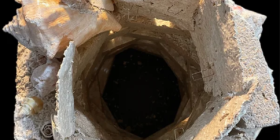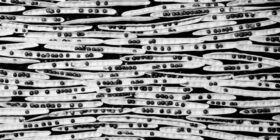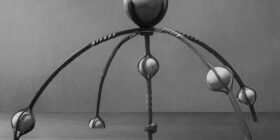Drawing is just a thought
Jean-Pierre Hébert is considered a pioneer in the field of digital art from the mid-1970s on. He has developed his personal computer code into a powerful tool that drives plotters and custom-built devices, pushing the artistic and technical boundaries and creating an original, extensive body of work. Long before modern computer displays allowed one to pre-visualize an idea, Jean-Pierre was imagining and creating amazingly complex pieces, existing only in his mind—and in his code. Hébert produces works on paper, including ink and pencil drawings, etchings and dry points from polymer and copper plates. He also creates sand, water and sound installations, and artist’s books.
The aim of his work remains an expression of quiet beauty and peaceful meditation.
Jean-Pierre Hébert co-founded the Algorists in 1995 with Roman Verostko. Since 2003, he has been artist-in-residence at the Kavli Institute for Theoretical Physics at the University of California, Santa Barbara, where he has organized and curated several Algorist group shows. In 2012, he received the ACM Siggraph Distinguished Artist Award for Lifetime Achievement in Digital Art.

“Boogie-Woogie, monochrome”, 1975-77, Ink on paper – pen plotter drawing of one single continuous line, 25cm x 25 cm
Artist’s Statement
I draw because I love to draw and always had a passion for drawings. Since the seventies, I have been working with the conviction that to gain power and beauty, drawing should become a pure mental activity, rather than a mere gestural skill. I have endeavored to make it so by banning the physical side of drawing.
Pursuing an ideal of beauty and ideal Platonic forms, inspired by my interests in patterns of geometry, mathematics, physics, nature (1), I create drawings by composing and writing down for each piece an original, defining code (2), or score. The aesthetic vision is expressed by the precise instructions and algorithmic processes necessary to release its potentiality. Stopping here would just be another form of conceptual art.
But this code can drive and precisely guide the chosen apparatus (3) to actually produce an observable proof of the concept on the chosen media (4) with the chosen marking tool (5).
The self-emergence of the drawing resulting from the translated mental vision is always a moment of truth, and a magically rewarding and fascinating performance, where one can be both witness and creator.
My current digital drawings are an outgrowth of my earlier works, literally drawn in the imagination, coded accordingly, and then realized with a large-format inkjet printer capable of the greatest complexity and detail. Entirely based on lines, the very material of drawing, I call these pieces digital drawings, or works in code and pigment on paper.
My process is thus very much akin to composing or choreographing, or simply … thinking. Drawing is just a thought.
(1) Concrete motifs, abstraction and simulation of light, wave, gravitation, mathematics, physics
(2) Programming languages (python, mathematica, scheme), some mechanical or electronics tinkering
(3) Computer, plotter, engraver, inkjet printer, controller, motor, magnet, pendulum, etching press, etc…
(4) Paper, copper plates, sand, water, display, wood, etc…
(5) Pen & ink, graphite lead, brush & watercolor, dry point, ball, sound, light, etc…
(6) This whole process is now sometime known as computational drawing

“Single Line Spiral With Glyphs”, 1989, China ink on paper – pen plotter drawing of one single continuous line, 82cm x 82cm
Jean-Pierre Hébert is a conceptual artist who avidly explores and participates in the emergence of postmodernism. His interests lie mainly in the analysis and understanding of the latent rules, styles, trends, mania, recipes behind modern or contemporary art, and in their interpretation, extension, adoption, integration, adaptation. Genes and algorithms identified, re-energized. Essence and gist remixed into new creations. This critical process leads to the reformulation of abstract concepts, and to the production of original works on paper, artist books, new media, and installations.
Hébert has chosen nearly four decades ago the precise language of software comforted by geometry and mathematics principles. He uses this unorthodox language to dissect, reflect on, test, and express effectively the logic and ways of the artistic process at hand. He is in fact one of the world’s first fine artists to co-opt computer code as an essential mode of expression and creating tool.

Jambes noires avec moire”, 1990, China ink on paper – pen plotter drawing of one single continuous line, 36cm x 36cm
Beyond supporting theoretical thinking and critical research, this software authoring process offers a clean path to creation, and to production. Programming a computer is very much akin to writing instructions for the perennial draughtsman (Sol Lewitt) –but it is also more exacting and powerful. This is how Hébert composes his pieces and also how he drives mechanical or electronic devices that assist him in making intensely beautiful, meditative works on paper, sand, water, other materials, and in animating installations.
----------------------------------------------------
The rest of this article is reserved for members only. If you have a subscription, please sign in here. Otherwise, why not Subscribe today?
Get the Full Experience
Read the rest of this article, and view all articles in full from just £10 for 3 months.





No comments yet.